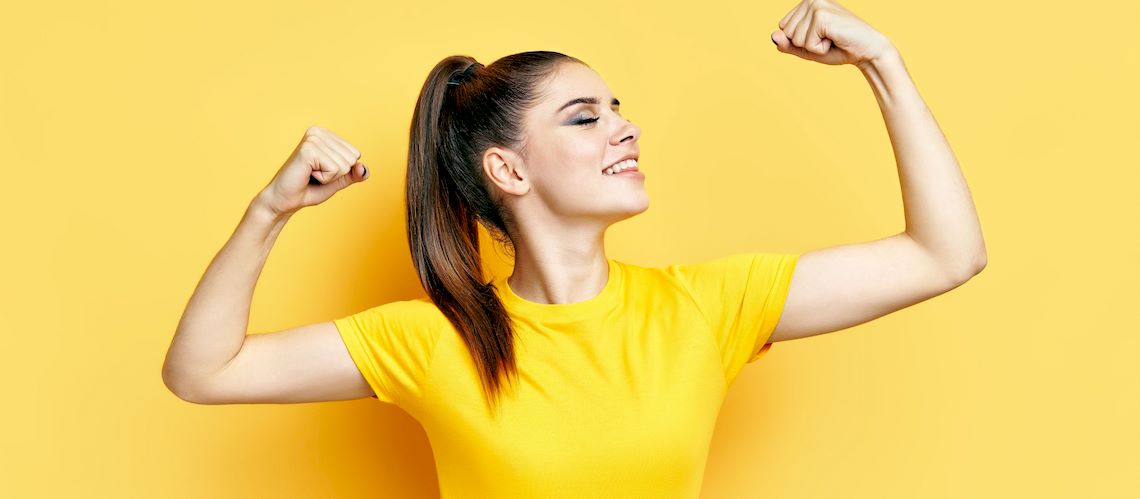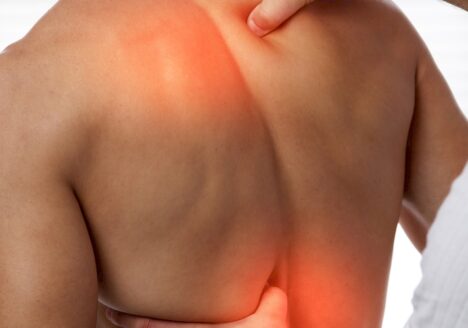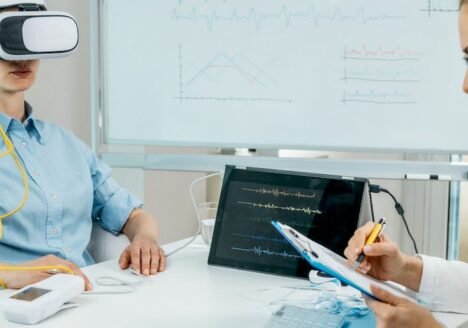Power poses, introduced by Carney, Cuddy, and Yap (2010), are expansive body postures that elicit psychological and physiological changes. These changes include increased feelings of power, heightened confidence, and reduced stress. Within the Excellence Nexus framework, power poses serve as a versatile tool for achieving and sustaining peak performance across its six domains: Physical Peak, Mental Peak, Emotional Peak, Spiritual Peak, Prosperity Peak, and Impact Peak. This article examines how power poses can optimize performance and well-being in these areas, supported by robust research and actionable strategies.
To maximize performance across the six domains of the Excellence Nexus, incorporating power poses into your routines can be a transformative strategy. Below are examples of key poses and their specific applications for peak performance.
Power Pose Techniques for Peak Performance
Power poses are powerful tools for achieving and sustaining peak performance across the six domains of the Excellence Nexus: Physical Peak, Mental Peak, Emotional Peak, Spiritual Peak, Prosperity Peak, and Impact Peak. These poses require no special equipment or preparation, making them highly accessible for pre-performance routines and daily practice. Below are examples of power poses tailored to the Excellence Nexus domains:
- The Wonder Woman Pose
Description: Stand tall with feet hip-width apart, hands firmly placed on your hips, chest lifted, and chin slightly raised.
Application: (Impact Peak) Use this pose before delivering a presentation or leading a team meeting to project authority and inspire confidence in others. - The Victory Pose
Description: Stand or sit with arms stretched upward in a V shape, chest open, and head slightly tilted back.
Application: (Physical and Mental Peaks) Energize your body and mind before athletic competitions or high-stakes decision-making. - The Starfish Pose
Description: Stand with your arms and legs spread wide in an expansive starfish shape, occupying as much space as possible.
Application: (Mental and Prosperity Peaks) Reinforce feelings of control and strategic thinking before entering negotiations or brainstorming sessions. - The Expansive Lean
Description: Lean back with arms stretched across a desk or table, feet firmly planted and slightly apart.
Application: (Spiritual Peak) Combine this pose with deep breathing or reflection before meditation or prayer to align your physical and mental states for deeper spiritual connection.
Incorporating these poses into your daily routines or performance rituals helps cultivate the energy, focus, and confidence needed to excel in your chosen pursuits.
Applications in Excellence Nexus
With these practical techniques in mind, let’s explore how power poses support each domain of the Excellence Nexus, starting with the Physical Peak
Physical Peak
Achieving a physical peak requires maintaining optimal physical health and resilience. Power poses contribute by fostering physiological states conducive to peak performance. Early studies suggested that power poses might increase testosterone and reduce cortisol, hormones linked to strength, endurance, and stress regulation (Carney et al., 2010). While subsequent research questioned these hormonal effects (Ranehill et al., 2015; Simmons & Simonsohn, 2017), other mechanisms, such as psychological empowerment and reduced stress, remain strongly supported (Cuddy et al., 2018; Laborde et al., 2019).
Expansive postures also influence autonomic nervous system activity, promoting relaxation and reducing the physical strain associated with stress (Laborde et al., 2019). Practicing power poses before workouts or competitions primes both body and mind for optimal performance. Additionally, the role of body posture in cognitive and physical integration, as highlighted by Muehlhan et al. (2014), underscores the importance of physical readiness in sustaining a state of peak performance.
Mental Peak
Mental peak performance is characterized by clarity, focus, and the ability to make sound decisions under pressure. Power poses enhance mental functioning by reducing stress and promoting a confident mindset (Peper et al., 2017). By improving mood and self-perception, expansive postures can foster mental clarity and resilience, even in high-pressure scenarios (Cuddy et al., 2018).
Moreover, Schipper (2018) demonstrated that adopting power poses can increase active participation in cognitively demanding tasks, such as classroom discussions. These findings align with the Excellence Nexus’s focus on optimizing cognitive growth and performance. Power poses also support entry into a flow state—a mental condition of heightened focus and productivity—by calming the mind and fostering self-assuredness.
Emotional Peak
Sustaining an emotional peak requires resilience and balance, especially during challenging times. Power poses help individuals achieve this by regulating emotions through physiological and psychological pathways. The potential reduction in cortisol levels associated with power poses promotes emotional stability and reduces stress (Carney et al., 2010; Weineck et al., 2020).
For emotionally intense moments, such as before a difficult conversation or during high-stakes negotiations, power poses can act as an immediate intervention. Garrison et al. (2016) emphasized the moderating effect of social context on the efficacy of power poses, suggesting they are particularly effective in situations involving social interactions. Additionally, Peper et al. (2017) noted that postural shifts can positively influence mood and emotional recovery, helping individuals maintain emotional resilience over time.
However, the effectiveness of power poses may vary based on individual psychological profiles. Davis et al. (2017) found that individuals with social anxiety disorder did not experience significant improvements in public speaking performance after adopting power poses. This underscores the importance of understanding personal needs and contexts when integrating power poses into strategies for emotional resilience
Spiritual Peak
A spiritual peak involves aligning actions with one’s higher purpose and achieving a sense of inner harmony. While power poses are primarily physical, their psychological effects, such as fostering self-confidence and reducing internal conflict, can indirectly enhance spiritual well-being (Cuddy, 2015). Feeling empowered enables individuals to act authentically and pursue their spiritual goals with greater determination.
This connection between body and mind reflects Aristotle’s philosophy, as discussed in De Anima and Nicomachean Ethics, which emphasizes the importance of physical and psychological alignment for human flourishing (Lawson-Tancred, 1986; Ross & Brown, 2009). By integrating power poses into reflective practices like meditation or prayer, individuals can deepen their connection to their values and achieve a harmonious balance between mind, body, and spirit.
Prosperity Peak
Prosperity peak focuses on achieving financial and material success while maintaining ethical integrity. Power poses support this domain by boosting confidence and assertiveness, traits that are essential in business negotiations, leadership roles, and decision-making (Laborde et al., 2019). Mehrabian (1982) highlighted the role of nonverbal cues, such as expansive postures, in influencing perceptions of competence and trustworthiness.
Adopting power poses before professional interactions enhances nonverbal presence and persuasiveness, leading to better outcomes in high-stakes financial or career-related endeavors (Cuddy, 2015). This practice not only supports the attainment of prosperity but also encourages balance and mindfulness in wealth management.
Impact Peak
Impact peak is about maximizing influence and contributing meaningfully to society. Power poses can enhance leadership presence and amplify an individual’s ability to inspire and motivate others. Leaders who adopt power poses are often perceived as more competent and trustworthy, which enhances their influence in both personal and professional settings (Garrison et al., 2016; Mehrabian, 1982). The effectiveness of power poses in enhancing leadership presence may also depend on social roles and perceptions. Körner and Schütz (2020) highlighted that expansive postures project dominance, which can enhance perceptions of competence and authority in hierarchical settings. This dynamic underscores the value of power poses in leadership contexts where nonverbal presence significantly influences outcomes.
Incorporating power poses into daily routines helps sustain the energy and confidence required for long-term impact. Whether addressing a community or leading a team, the empowerment derived from power poses ensures that contributions are both meaningful and sustainable.
Benefits within Excellence Nexus
- Optimized Physical Performance:
Power poses support resilience, readiness, and recovery, fostering sustained peak physical performance (Laborde et al., 2019; Carney et al., 2010). - Enhanced Cognitive Function:
By reducing stress and enhancing focus, power poses contribute to peak mental performance and creativity (Peper et al., 2017; Schipper, 2018). - Improved Emotional Resilience:
The emotional regulation provided by power poses aids stability and resilience, crucial for maintaining peak emotional states (Weineck et al., 2020; Garrison et al., 2016). - Strengthened Spiritual Alignment:
Power poses foster confidence and reduce internal conflict, helping individuals align with their higher purpose (Cuddy, 2015; Lawson-Tancred, 1986). - Increased Professional Success:
By enhancing assertiveness and nonverbal presence, power poses support prosperity in financial and professional endeavors (Mehrabian, 1982; Laborde et al., 2019). - Maximized Societal Impact:
Power poses amplify leadership presence and influence, empowering individuals to make meaningful contributions (Garrison et al., 2016; Mehrabian, 1982).
How to Integrate Power Poses in Excellence Nexus
- Pre-Performance Rituals:
Use power poses as part of pre-performance routines to prepare for physical, mental, or emotional challenges with confidence and clarity. - Daily Empowerment Practice:
Incorporate power poses into morning routines to maintain a state of empowerment and readiness throughout the day. - Mindful Alignment:
Combine power poses with meditation or prayer to align body, mind, and spirit, supporting both spiritual and mental peaks. - Leadership and Influence:
Practice power poses before key leadership activities or public speaking engagements to enhance your presence and ability to inspire.
Conclusion
Power poses are a powerful tool within the Excellence Nexus framework, offering benefits across all domains of peak performance: Physical Peak, Mental Peak, Emotional Peak, Spiritual Peak, Prosperity Peak, and Impact Peak. By integrating power poses into daily routines and high-stakes situations, individuals can enhance their potential, sustain peak performance, and make meaningful contributions to the world.
References
Carney, D.R., Cuddy, A.J.C. and Yap, A.J. (2010). Power posing: brief nonverbal displays affect neuroendocrine levels and risk tolerance. Psychological Science, 21(10), pp. 1363–1368.
Cuddy, A.J.C., Schultz, S.J. and Fosse, N.E. (2018). P-curving a more comprehensive body of research on postural feedback reveals clear evidential value for power-posing effects: Reply to Simmons and Simonsohn (2017). Psychological Science, 29(4), pp. 656–666.
Cuddy, A.J.C. (2015). Presence: bringing your boldest self to your biggest challenges. Retail ed., unabridged. New York: Hachette Audio.
Davis, M.L., Papini, S., Rosenfield, D., Roelofs, K., Kolb, S., Powers, M.B. and Smits, J.A.J. (2017). A randomized controlled study of power posing before public speaking exposure for social anxiety disorder: no evidence for augmentative effects. Journal of Anxiety Disorders, 52, pp. 1–7.
Garrison, K.E., Tang, D. and Schmeichel, B.J. (2016). Embodying power: A preregistered replication and extension of the power pose effect. Social Psychological and Personality Science, 7(7), pp. 623–630.
Körner, R. and Schütz, A. (2020). Dominance or prestige: A review of the effects of power poses and other body postures. Social and Personality Psychology Compass, 14(8), e12559.
Laborde, S., Strack, N. and Mosley, E. (2019). The influence of power posing on cardiac vagal activity. Acta Psychologica, 199, p. 102899.
Lawson-Tancred, H. (ed.) (1986). De anima (on the soul). Penguin classics. Harmondsworth: Penguin Books.
Mehrabian, A. (1982). Nonverbal communication. New York: Aldine Publishing.
Muehlhan, M., Marxen, M., Landsiedel, J., Maluck, E., Wintermann, G.B. and Voss, A. (2014). The effect of body posture on cognitive performance: a question of sleep quality. Frontiers in Human Neuroscience, 8, p. 171.
Peper, E., Lin, I.M., Harvey, R. and Perez, J. (2017). How posture affects memory recall and mood. Biofeedback, 45(2), pp. 36–41.
Ranehill, E., Dreber, A., Johannesson, M., Leiberg, S., Sul, S. and Weber, R.A. (2015). Assessing the robustness of power posing: no effect on hormones and risk tolerance in a large sample of men and women. Psychological Science, 26(5), pp. 653–656.
Ross, W.D. and Brown, L. (2009). The Nicomachean ethics. Oxford world’s classics. ed. rev. Oxford: Oxford University Press.
Schipper, S. (2018). Power posing for increased participation in the EFL classroom. The Language Teacher, 42(6), pp. 9–11.
Simmons, J.P. and Simonsohn, U. (2017). Power posing: p-curving the evidence. Psychological Science, 28(5), pp. 687–693.
Weineck, F., Messner, M., Hauke, G. and Pollatos, O. (2020). Improving interoceptive ability through the practice of power posing: a pilot study. PLOS ONE, 15(2), p. e0228820.




